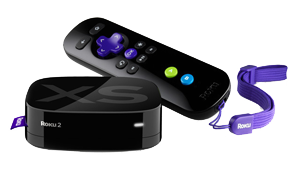Tutorial - Media Server - Windows
Choose one of the following media server options.
Mongoose Web Server
Mongoose is an easy to install web server that will do everything that is needed for Roksbox to operate. If you want a quick and easy web server installation, choose this option. Note, however, that there is a 2GB filesize limit with Mongoose (an average 2 hour video is approximately 2GB).
- Go to http://dl.dropbox.com/u/2841707/downloads/mongoose-2.8.install.exe. Select Run to download and start the install, or select Save to save the install file, then execute it to start the install. If you get a security alert from your firewall, select the option to unblock Mongoose. You can do a default installation by clicking on the Next buttons. If you get an error message during installation, you might need to log off, and log back on as administrator and restart the installation.
- By default, Mongoose uses your entire C: drive as a web server. This probably isn't a good idea, so let's change it to use a folder under the C: drive.
- Open windows explorer (My Computer, or Computer), and create a folder called www under the C: root.
- Go to Start menu -> All Programs -> Mongoose web server -> Edit config.
- This will open Notepad. Find the line that says root c:\, and change it to say root c:\www\.
- Click File -> Save, then File - > Exit.
- Reboot your computer and your web server should be ready.
Apache Web Server
Apache is a more advanced web server with more configuration options. Many people prefer it for its advanced features.
To install Apache, follow the steps at the following link. You don't need to do the PHP or MySQL part at the end of the instructions.
 Install Apache
Install Apache
After you install Apache, you need to make a few changes to the Apache configuration file. Click Start -> All Programs -> Apache HTTP Server 2.2 -> Configure Apache Server -> Edit the Apache httpd.conf Configuration File. Scroll down to the statement that says DocumentRoot, and change it to the location where your HTML files and site are located (ex. DocumentRoot "C:/www"). Then scroll on down to where it says something like <Directory "C:/Apache/Apache2.2/htdocs"> and change this to the same location as your DocumentRoot (ex. <Directory "C:/www">).
Next scroll down to the very bottom of the file, and type or copy and paste the following lines:
EnableSendfile Off
EnableMMap Off
Win32DisableAcceptEx
Save the Apache configuration file, then restart Apache by clicking on the Apache icon in the Systen Tray, and selecting Restart.
Microsoft IIS 7 (Vista) or 7.5 (Windows 7) Web Server
IIS 7 is available on Vista Professional, Enterprise, or Ultimate. IIS 7.5 is available on all editions of Windows 7 (Home Starter, Home Basic, Home Professional, Professional, Enterprise, Ultimate). IIS is a good choice for a reliable, and reasonably easy to install media server. Once set up and configured, IIS should provide all features necessary to operate with Roksbox with no file size limitations.
This guide also includes information on using Symbolic Links in Windows.
 IIS Setup
IIS Setup
Thanks to Roksbox user Trevor (Roku forum member rilex) for providing this setup guide.
Testing
You can test your web server by opening a web browser and entering http://localhost in the URL window. If everything is working, you will see a listing of your folders under your C:\www folder. Now find the ip address of your computer by opening a command window (start -> run -> cmd) and typing ipconfig. Your ip address will show up as IP Address, or IPv4 Address. It will look something like 192.168.1.100 (your numbers will probably be different). Also, check to see if it works by entering http://your_ip_address in a web browser as you did with localhost. It should also show the folders under your C:\www folder. Write down this address, because you will need it later. If you have another computer on your network, open a web browser on the other computer and type the ip address of your web server in the URL window. If your web server is correctly installed, you will see the same file directory in the web browser of the other computer. If you are running a local firewall on your web server machine, you might need to allow HTTP or open port 80 on the firewall. Check with your firewall provider, or search the internet to see how to do this.

